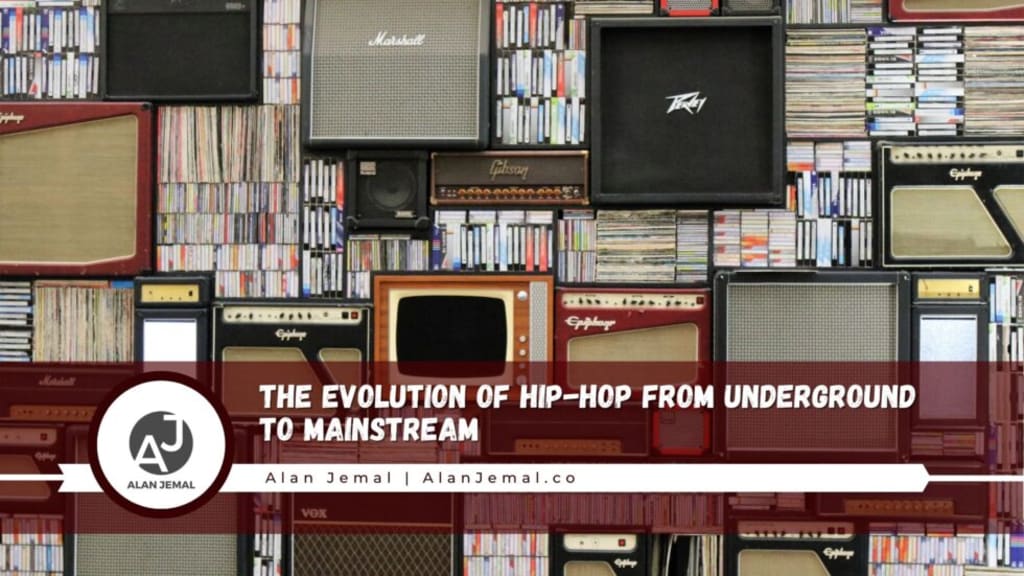Alan Jemal on The Evolution of Hip-Hop From Underground to Mainstream | NYC
Alan Jemal | Hobbies

Hip-hop music, often called “rap,” began as an underground phenomenon in the African-American communities of the Bronx and Harlem in the late 1970s. Initially, the genre allowed young people to express their social and political frustrations and celebrate their African-American culture. Over the years, hip-hop has evolved from a niche musical genre to a cultural phenomenon that has crossed the mainstream.
The Early Days of Hip-Hop
Hip-hop music was born in the Bronx, New York, in the late 1970s, in the form of block parties and street jams. The early hip-hop DJs, such as Grandmaster Flash and Afrika Bambaataa, would play funk and soul records and use two turntables to create “breaks” in the music that dancers could use to show off their moves. MCs (masters of ceremonies) would rap over the beats, providing a rhythmic, spoken-word commentary on the music and the world around them.
As hip-hop grew in popularity in the early 1980s, it remained largely underground and was not yet a mainstream phenomenon. However, by the mid-1980s, hip-hop had begun to gain wider acceptance, and the genre’s first commercially successful releases, such as Run-DMC’s “Raising Hell” and L.L. Cool J’s “Radio,” helped to bring hip-hop to a broader audience.
The Golden Age of Hip-Hop
The late 1980s and early 1990s are often called the “golden age” of hip-hop when the genre enjoyed its most significant creative and commercial success. Hip-hop became a cultural force during this time, influencing fashion, art, and popular culture. Hip-hop artists such as Public Enemy, N.W.A., and Ice-T used their music to address social and political issues, such as racism, police brutality, and poverty.
At the same time, hip-hop also began to diversify, with the emergence of different sub-genres such as gangsta rap, conscious rap, and alternative hip-hop. Hip-hop also began to cross into other genres, with collaborations between hip-hop artists and pop and rock musicians, such as Run-DMC’s “Walk This Way” with Aerosmith and Queen Latifah’s “U.N.I.T.Y.” with pop producer Naughty by Nature.
The Mainstreaming of Hip-Hop
Hip-hop’s commercial success continued to grow in the 1990s, with the genre dominating the music charts and becoming a fixture on mainstream radio and television. Hip-hop artists such as Tupac Shakur, The Notorious B.I.G., and Jay-Z became household names, with their music and lifestyles celebrated in the media.
As hip-hop’s popularity grew, it began to be embraced by corporate America, with hip-hop fashion, accessories, and lifestyles being marketed to a mainstream audience. Hip-hop also began to influence other areas of popular culture, such as movies, television, and advertising.
Hip-Hop Today
Today, hip-hop is a global cultural phenomenon, with fans and artists worldwide. The genre continues to evolve and diversify, with new sub-genres and styles constantly emerging. Hip-hop has also become an industry in its own right, with record labels, media companies, and other businesses devoted to the genre.
Hip-hop has come a long way since its early days in the Bronx, but it remains a vital cultural force. It continues to provide a platform for young people to express themselves and address social and political issues often ignored by the mainstream media. And as hip-hop continues to evolve and grow, it will remain an influential genre of music.
This blog was previously published on May 15, 2023 at AlanJemal.org
About
Alan Jemal has been working in commercial real estate in New York City for years. Alongside his family, he works as a partner at Jem Realty Management, Inc. The company owns millions of square feet of commercial space around New York City and surrounding areas and leases those properties to various small businesses, retailers, and other organizations. Alan loves working in the industry and finding properties with great potential. He has developed an interest in construction, architecture, and finance, which help him to organize profitable projects and keep the company thriving.
Over the years, Alan Jemal has helped his team land multiple large deals on new properties. One example was their 2014 purchase of an office building in Harlem. Built in 1905, the building houses the historic Alhambra Ballroom, as well as several floors of additional commercial space. The Alhambra Ballroom was designed to be a vaudeville venue in its early days, hosting music legends such as Billie Holliday and Bessie Smith. Additionally, the building once housed a well-known bowling alley called Harlem Lanes and a soul food restaurant called Gospel Uptown. Today, the Alhambra Ballroom is still available as an event space, and one floor was recently renovated to house a new location for The French American Charter School.
About the Creator
Alan Jemal
Based in New York City, Alan Jemal has spent his entire career working with Jem Realty Management in commercial real estate development and management. He loves getting to invest in communities and support small businesses.






Comments
There are no comments for this story
Be the first to respond and start the conversation.